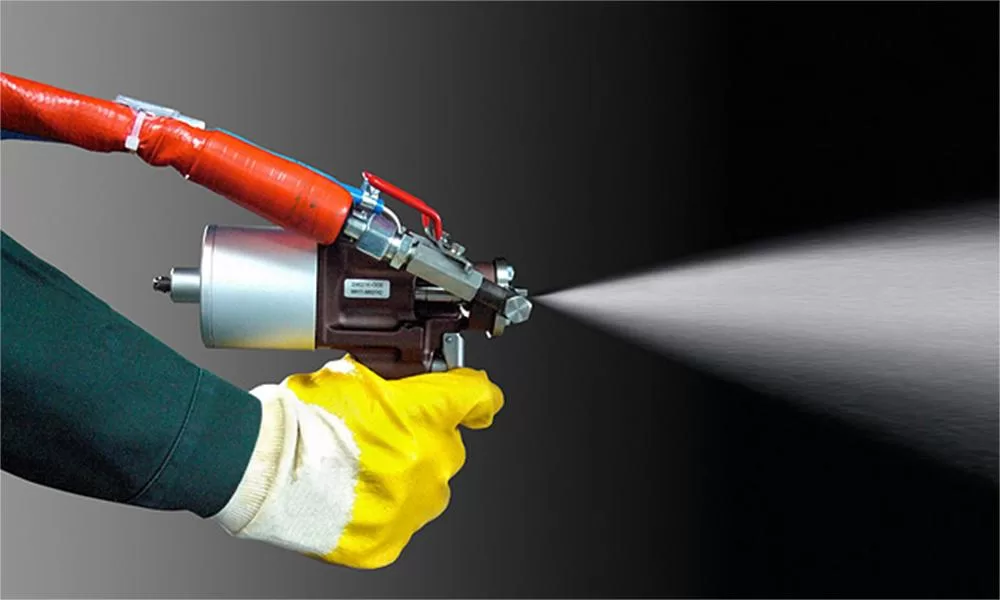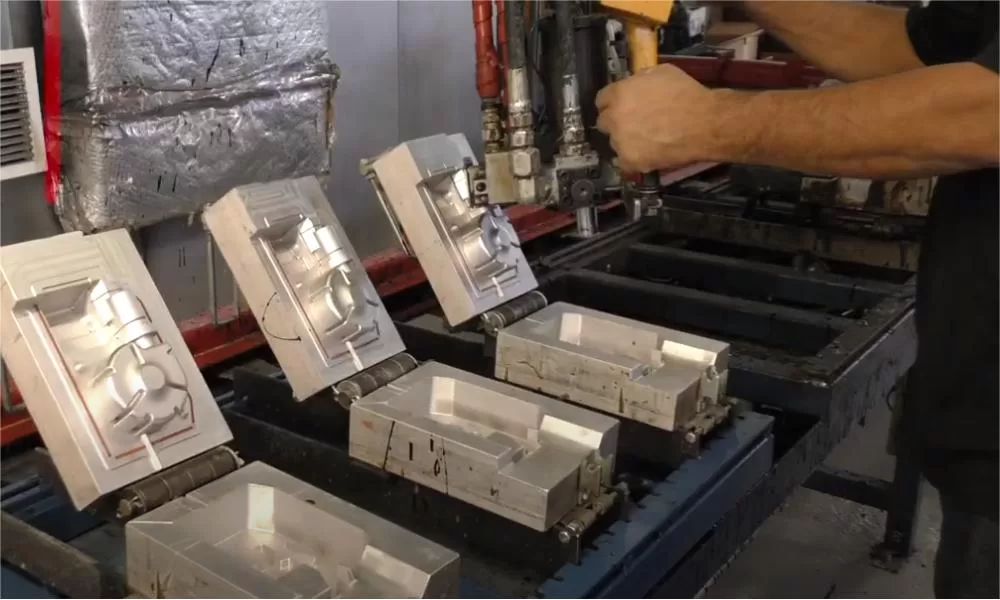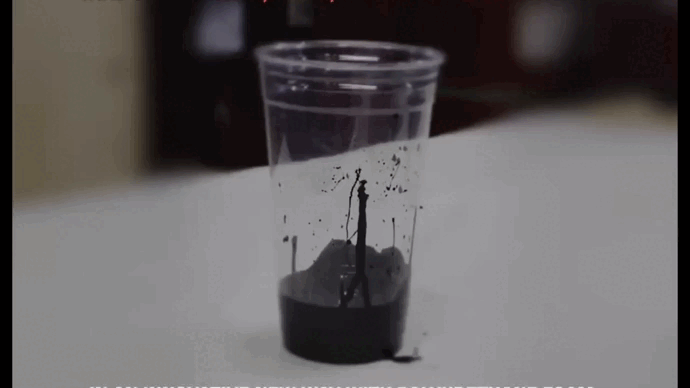في عالم البوليمرات الواسع، تبرز رغوة البولي يوريثان باعتبارها مادة متعددة الاستخدامات ومبتكرة، تعمل على تحويل الصناعات بخصائصها وتطبيقاتها الفريدة. ولد البولي يوريثين نتيجة للتفاعلات الكيميائية المعقدة بين الأيزوسيانات والبولي إيثرات، ويتميز بمقاومته الرائعة للحرارة والكيميائية والماء. يتعمق هذا المقال في عالم رغوة البولي يوريثان، ويلقي الضوء على إنتاجه وتصنيفاته ومزاياه والتحديات التي تشكلها على البيئة. وبينما نتنقل عبر تعقيدات هذه المادة، سنستكشف أيضًا آفاقها المستقبلية، مما يضمن فهمًا شاملاً لرغوة البولي يوريثان وأهميتها في التطبيقات الحديثة.

مقدمة لرغوة البولي يوريثان
رغوة البولي يوريثان هي عملية تفاعل كيميائي تقوم من خلالها مادة البولي يوريثان الخام بتكوين فقاعات في ظل ظروف محددة لتشكيل بنية رغوية مسامية. هذه الرغوة خفيفة الوزن وعازلة ومرنة، مما يجعلها شائعة في العديد من التطبيقات مثل عزل المباني والأثاث والمراتب والأحذية ومقاعد السيارات. في Ifoama، لدينا المنتجات مصنوعة من رغوة البولي يوريثان.
المكونات الأساسية للبولي يوريثين
At the heart of polyurethane foam are two primary components: polyisocyanates and polyols. These compounds, when combined, undergo a chemical reaction that results in the formation of polyurethane. While polyisocyanates provide the necessary rigidity, polyols add flexibility. Additionally, other ingredients play crucial roles. Catalysts, for instance, accelerate the reaction, ensuring efficiency. Foaming agents are pivotal in creating the foam’s cellular structure, and stabilizers and surfactants are added to maintain the foam’s consistency and shape.
The Chemical Principle Behind Foaming
The basic principle of polyurethane foaming هو أنه عندما يتم خلط البولي إيزوسيانات والبوليولات في وجود محفز و/أو عامل نفخ، فإنها تتفاعل لإنتاج ثاني أكسيد الكربون أو غازات أخرى. الفقاعات المتكونة من هذه الغازات محاطة بمواد صلبة من مادة البولي يوريثين المعالجة، مما يؤدي إلى تكوين بنية رغوية.
يعد إنشاء رغوة البولي يوريثان أحد أعجوبة الكيمياء. عندما تتفاعل البولي إيزوسيانات والبوليولات، فإنها تتوسع، وتشكل مصفوفة تلتقط الغاز، مما يؤدي إلى تكوين الفقاعات. تؤدي هذه العملية إلى ظهور بنية خفيفة الوزن ومسامية، ومثالية لمختلف التطبيقات. يمكن أن يؤثر اختيار عامل الرغوة، سواء كان فيزيائيًا أو كيميائيًا، بشكل كبير على الخصائص النهائية للرغوة. تتبخر العوامل الفيزيائية، مثل الهيدروكربونات، عند تعرضها للحرارة، مما يساعد في تكوين الرغوة. في المقابل، تطلق العوامل الكيميائية الغاز عند التحلل، مع كون الماء مثالًا شائعًا.
مقارنة بين عوامل الرغوة الفيزيائية والكيميائية
عوامل الرغوة الفيزيائية
تعتمد عوامل الرغوة الفيزيائية، المعروفة أيضًا باسم عوامل النفخ، على طبيعتها المتطايرة المتأصلة لإنتاج الرغوة. عند تعرضها للحرارة أو الضغط أثناء عملية الرغوة، تتبخر هذه العوامل، مما يؤدي إلى تكوين فقاعات غازية داخل خليط البولي يوريثان. هذا التوسع يخلق البنية الخلوية للرغوة. تشمل بعض عوامل الرغوة الفيزيائية الشائعة ما يلي:
- الهيدروكربونات: تشمل الأمثلة البيوتان والبنتان والأيزوبنتان. غالبًا ما يتم استخدامها نظرًا لتأثيرها البيئي المنخفض وفعاليتها من حيث التكلفة. وهي مفضلة بشكل خاص في إنتاج الرغاوي المرنة.
- مركبات الفلوروكربون: على الرغم من فعاليتها، إلا أنها كانت تحت التدقيق بسبب المخاوف البيئية المحتملة، وخاصة فيما يتعلق باستنفاد طبقة الأوزون. مركبات الكربون الهيدروفلورية (مركبات الهيدروفلوروكربون) هي نوع شائع معروف بموصليته الحرارية المنخفضة.
عوامل الرغوة الكيميائية
تتحلل عوامل الرغوة الكيميائية أثناء عملية الرغوة، مما يؤدي إلى إطلاق غازات تساهم في تكوين البنية الخلوية للرغوة. يعتمد نوع وكمية الغاز المنطلق على العامل الكيميائي المحدد المستخدم. تشمل بعض عوامل الرغوة الكيميائية البارزة ما يلي:
- الماء: عند مزجه مع الأيزوسيانات، يطلق الماء ثاني أكسيد الكربون. يعد هذا التفاعل طريقة أساسية لإنتاج رغاوي البولي يوريثان المرنة. يعمل ثاني أكسيد الكربون الناتج كعامل نفخ، مما يؤدي إلى تكوين هيكل الرغوة.
- آزوديكربوناميد: يستخدم بشكل شائع في إنتاج رغاوي الفينيل، وهو يتحلل ليطلق النيتروجين وأول أكسيد الكربون وثاني أكسيد الكربون. إنه مفضل لقدرته على إنتاج هياكل خلوية موحدة في الرغاوي.
- بيكربونات الصوديوم: غالبًا ما يتم دمجه مع حمض الستريك أو حمض الطرطريك، ويطلق ثاني أكسيد الكربون عند التحلل. يُستخدم هذا بشكل أكثر شيوعًا في صناعة المواد الغذائية ولكن يمكن العثور عليه في تطبيقات في عمليات رغوة البولي يوريثان المحددة.
خصائص رغوة البولي يوريثان
Polyurethane foam boasts several distinct characteristics. Its density, which refers to its mass per unit volume, can be adjusted by altering the formulation, allowing manufacturers to produce foams tailored for specific applications. Porosity, or the foam’s open spaces, determines its insulation capabilities. A higher porosity translates to better insulation but might compromise the foam’s structural integrity. Elasticity, another crucial property, dictates how the foam responds to external pressures, making it ideal for cushioning applications.

Applications of Polyurethane Foaming
أدى تعدد استخدامات رغوة البولي يوريثان إلى استخدامها على نطاق واسع في مختلف القطاعات. في البناء، يتم تقديره لقدراته العازلة، مما يجعله مثاليًا للجدران والأسقف. كما أنها تلعب دورًا حاسمًا في سد الفجوات، وتعزيز كفاءة استخدام الطاقة في المبنى. في صناعة الأثاث، جعلت مرونته وراحته المادة المفضلة للوسائد في الأرائك والمراتب. كما يعتمد قطاع السيارات عليها بشكل كبير في مقاعد السيارة ولوحات العدادات والعزل، وذلك بفضل طبيعتها خفيفة الوزن ومتانتها.
الاعتبارات البيئية والصحية
في حين أن رغوة البولي يوريثان توفر فوائد عديدة، فمن الضروري النظر في آثارها البيئية والصحية. ومن وجهة نظر بيئية، فإن متانتها هي سلاح ذو حدين. على الرغم من أنها تضمن طول عمر المنتجات، إلا أنها تعني أيضًا أن الرغوة غير قابلة للتحلل الحيوي، مما يشكل تحديات كبيرة للتخلص منها. على الصعيد الصحي، في حين أن رغوة البولي يوريثان المعالجة تعتبر آمنة بشكل عام، فإن الأبخرة المنبعثة من نظيرتها غير المعالجة يمكن أن تكون ضارة. تعتبر التهوية المناسبة أثناء تطبيقه أمرًا بالغ الأهمية، وكذلك استخدام معدات الحماية.
الاتجاهات المستقبلية في رغوة البولي يوريثان
عالم رغوة البولي يوريثان يتطور باستمرار. مع تزايد المخاوف البيئية، هناك تحول ملحوظ نحو البولي يوريثان الحيوي، والذي يَعِد بتقليل البصمة الكربونية. يؤدي البحث والتطوير المستمر أيضًا إلى ابتكارات في المحفزات وعوامل الرغوة وعمليات الإنتاج. تضمن هذه التطورات إنتاج رغاوي عالية الجودة ذات خصائص محسنة، تلبي المتطلبات المتغيرة باستمرار لمختلف الصناعات.
الأسئلة الشائعة والمفاهيم الخاطئة
تحيط العديد من المفاهيم الخاطئة برغوة البولي يوريثان. الاستعلام الشائع هو سميته. في حين أن الرغوة، بمجرد معالجتها بالكامل، تكون خاملة وآمنة، فإن نظيرتها غير المعالجة يمكن أن تطلق أبخرة سامة، مما يؤكد أهمية تدابير السلامة أثناء تطبيقها. سؤال متكرر آخر يتعلق بتخزينه ومعالجته. يوصى بتخزين رغوة البولي يوريثان في مكان بارد وجاف واستخدام معدات الحماية دائمًا مثل القفازات والأقنعة عند التعامل مع شكلها غير المعالج لمنع الاتصال المباشر والاستنشاق.

خاتمة
وفي الختام، فإن رغوة البولي يوريثان، مع تطبيقاتها التي لا تعد ولا تحصى وخصائصها الفريدة، قد رسخت مكانتها بقوة في الصناعات الحديثة. إن تنوعها، إلى جانب قدرتها على التكيف، يضمن استمرار أهميتها في مختلف القطاعات. ومع ذلك، ونحن نمضي قدمًا، من الضروري الموازنة بين فوائدها والاعتبارات البيئية والصحية، مما يضمن مستقبلًا مستدامًا.

